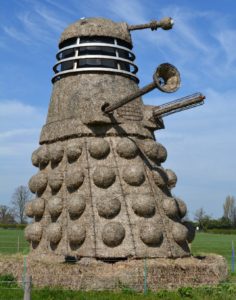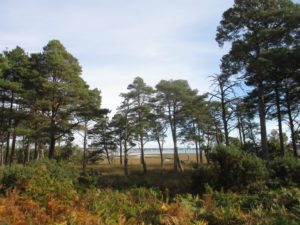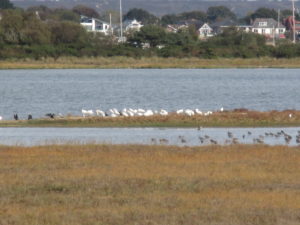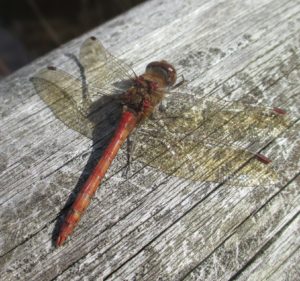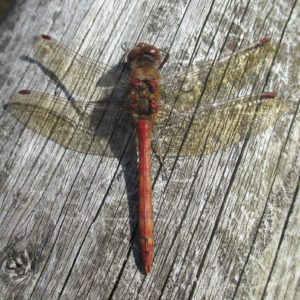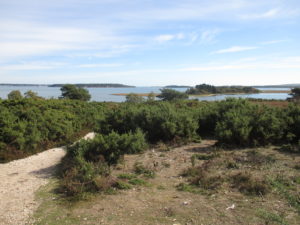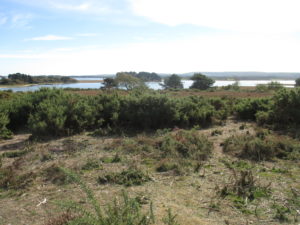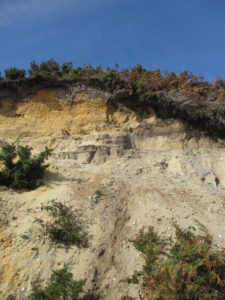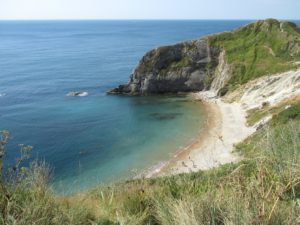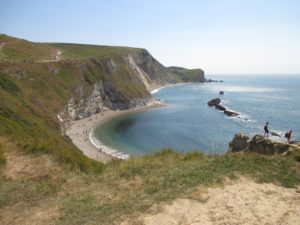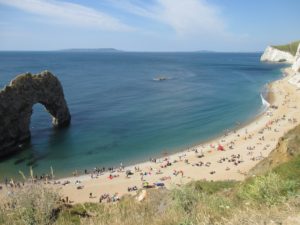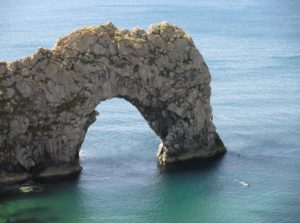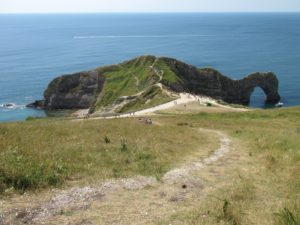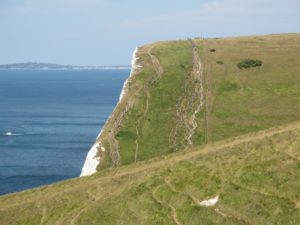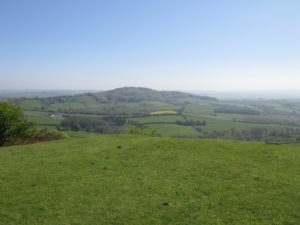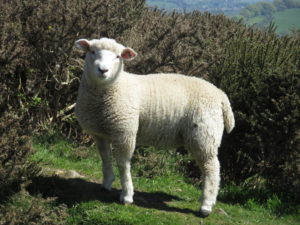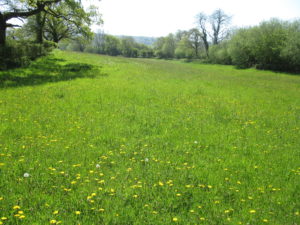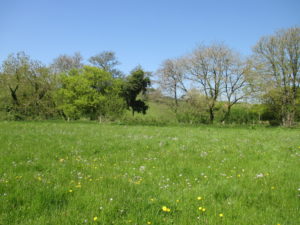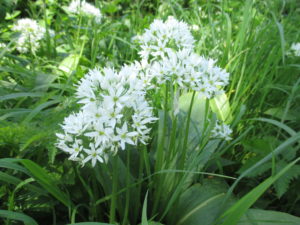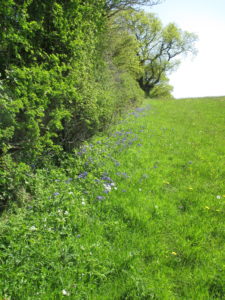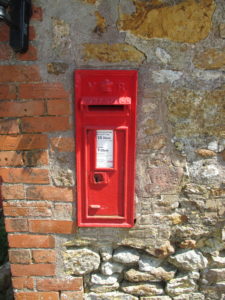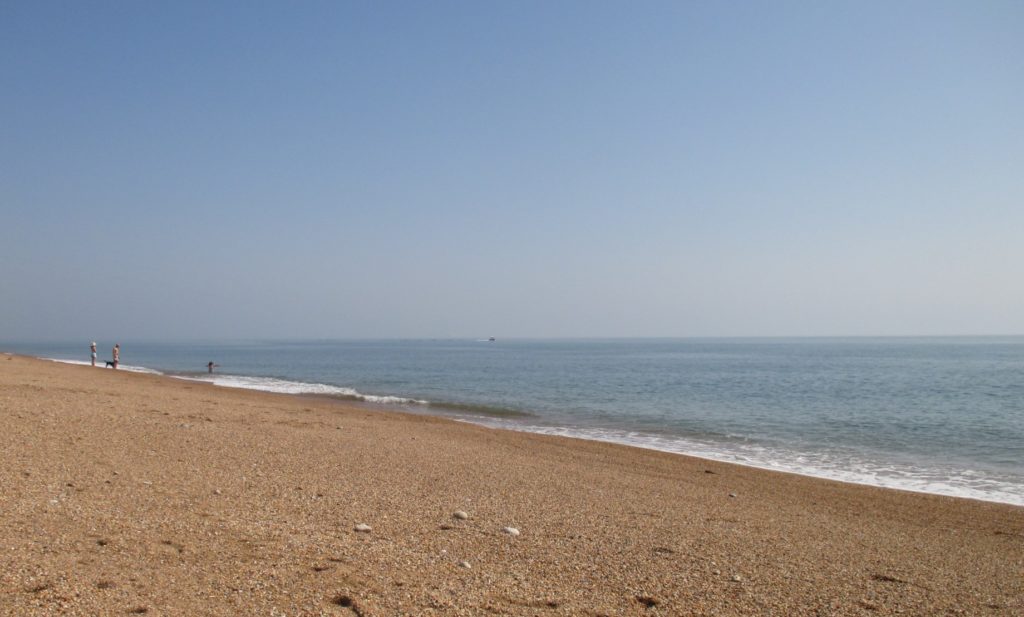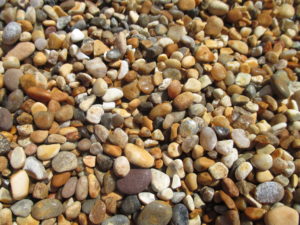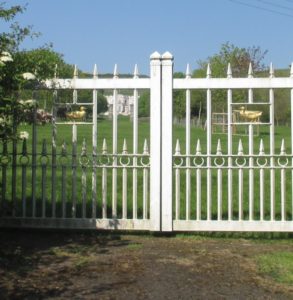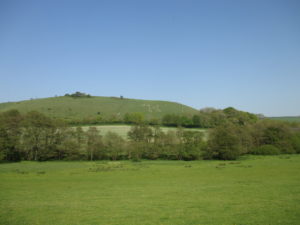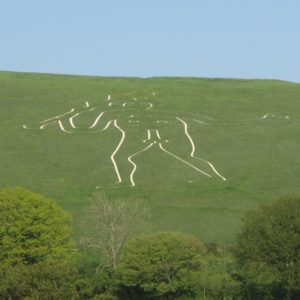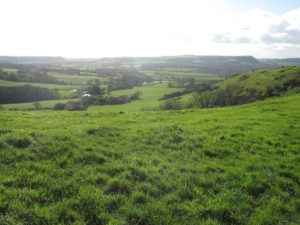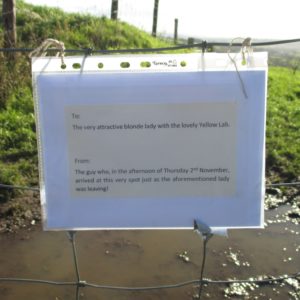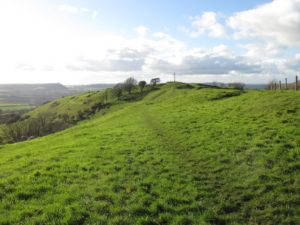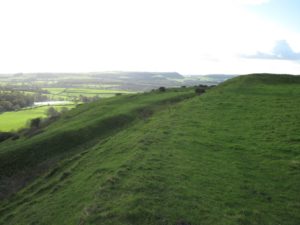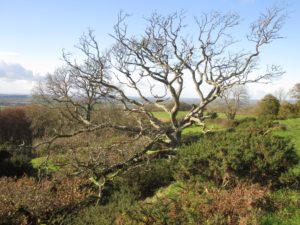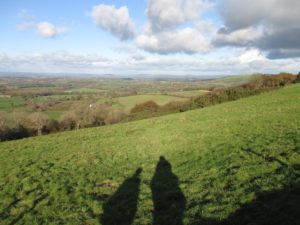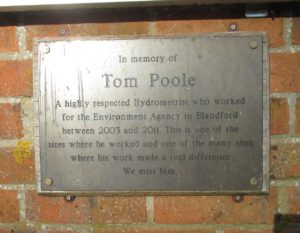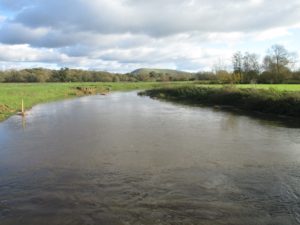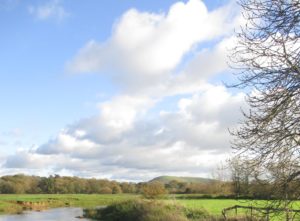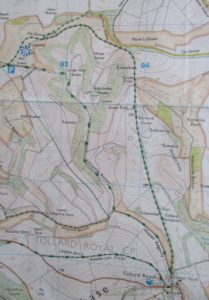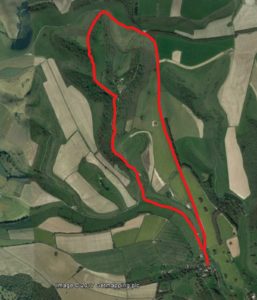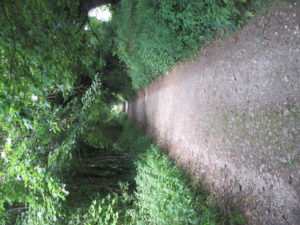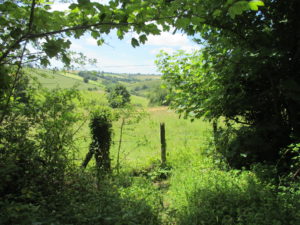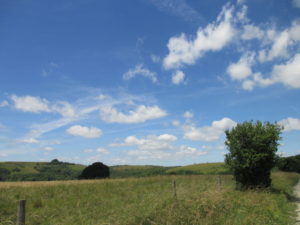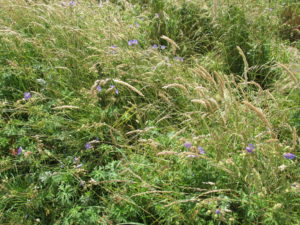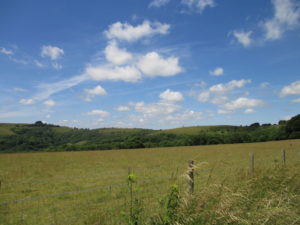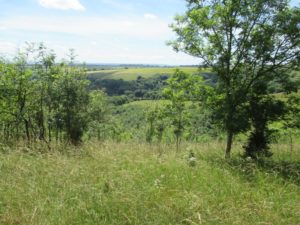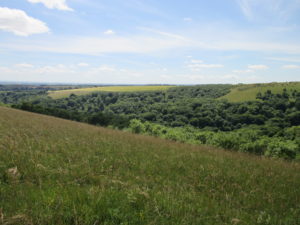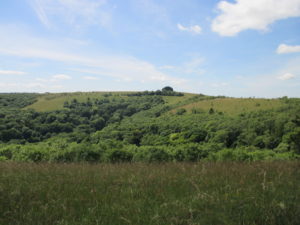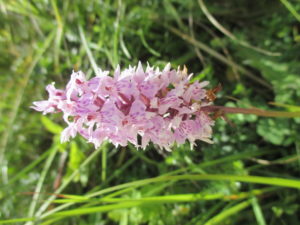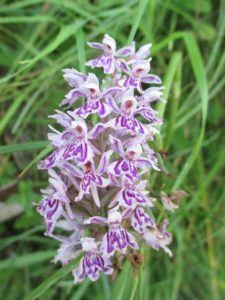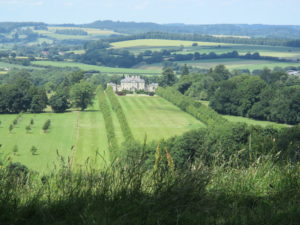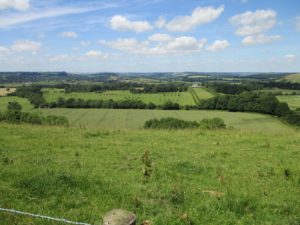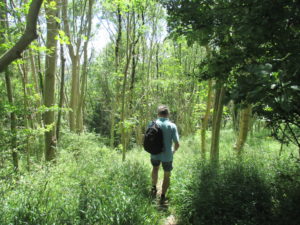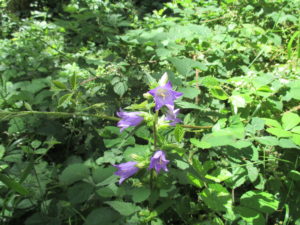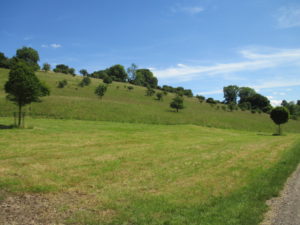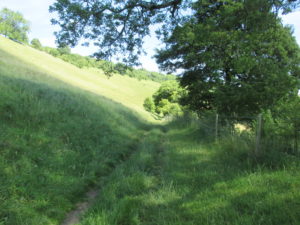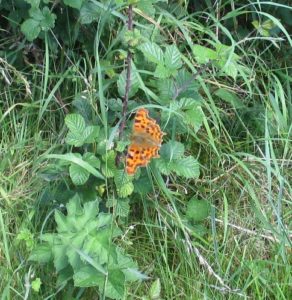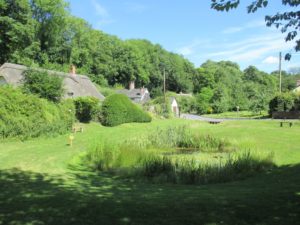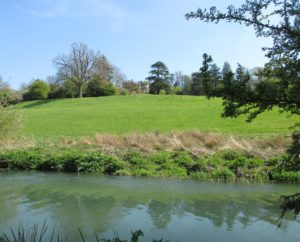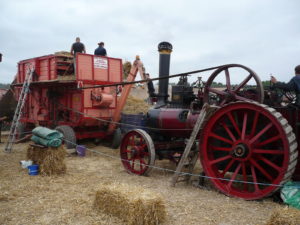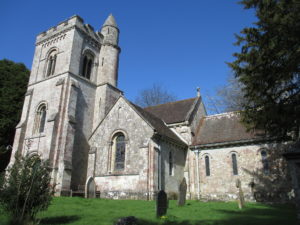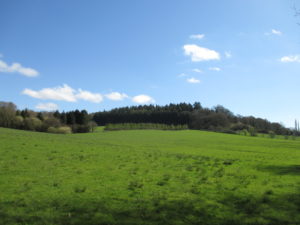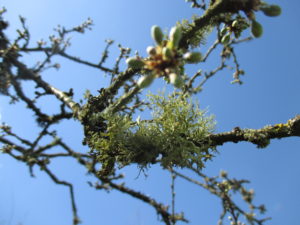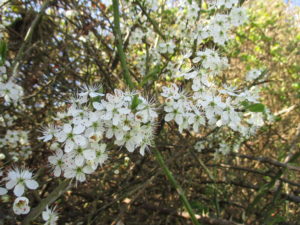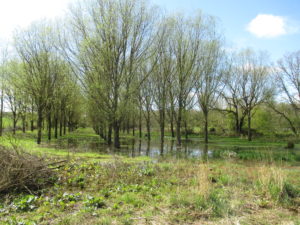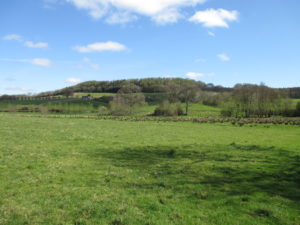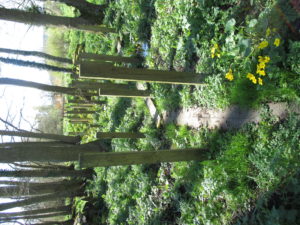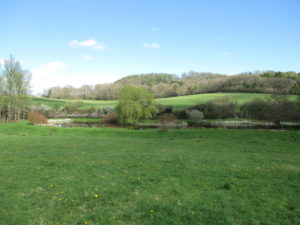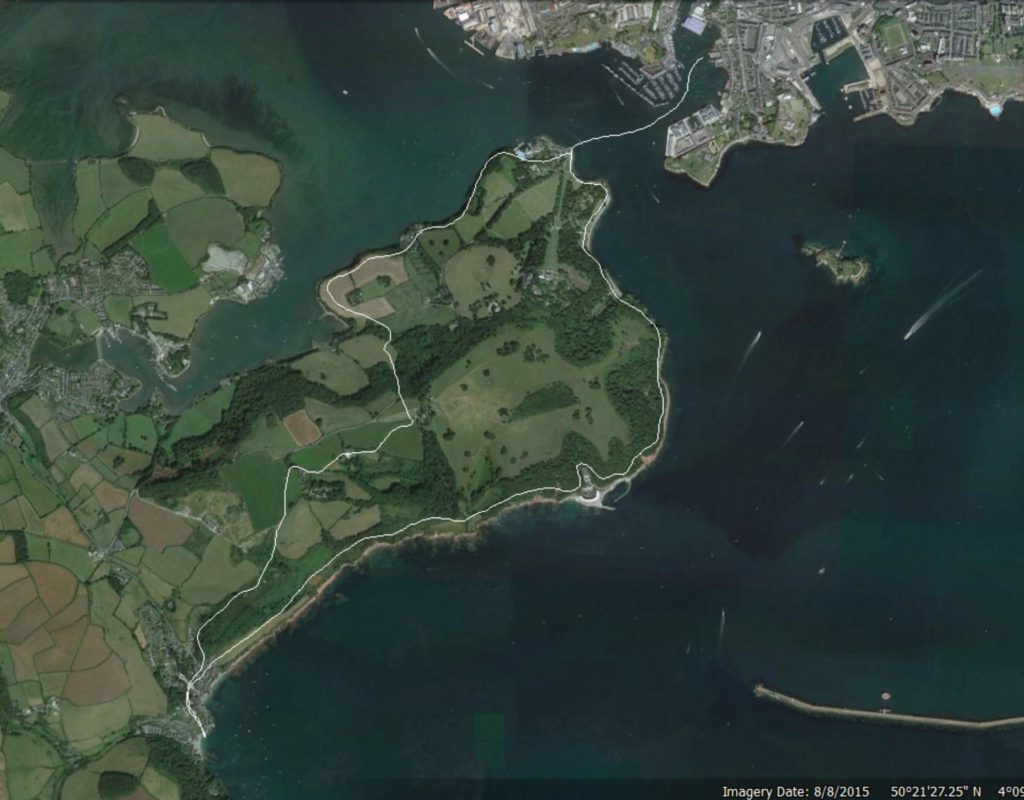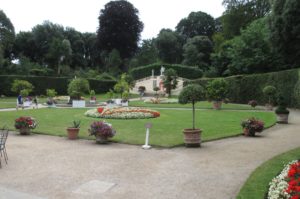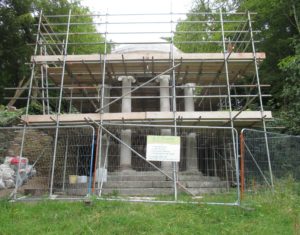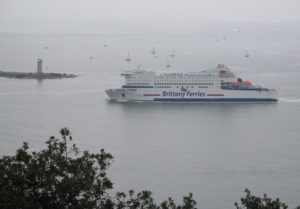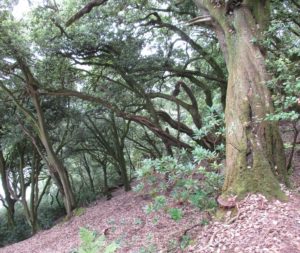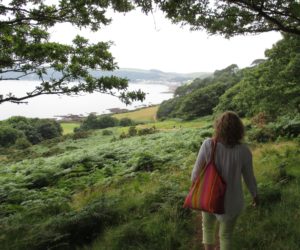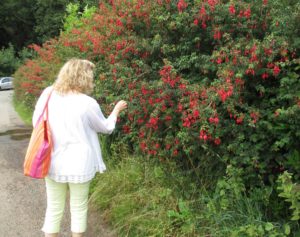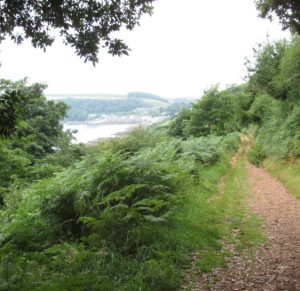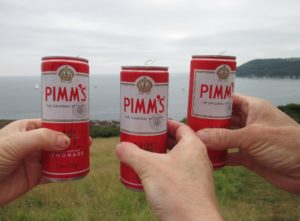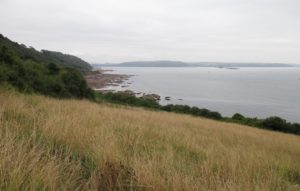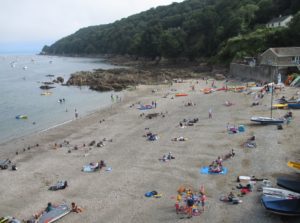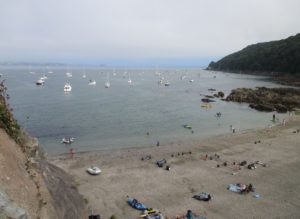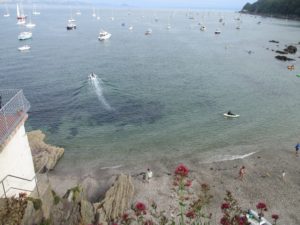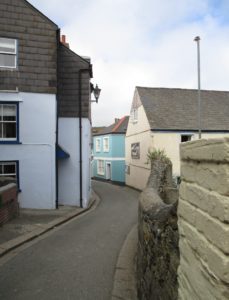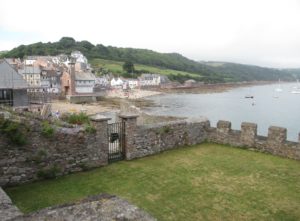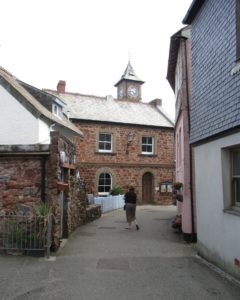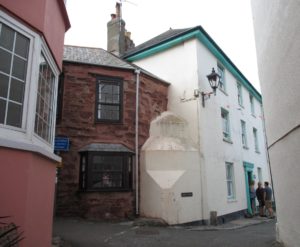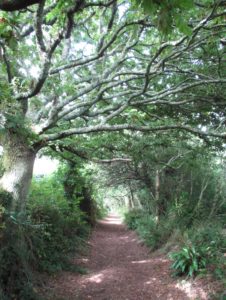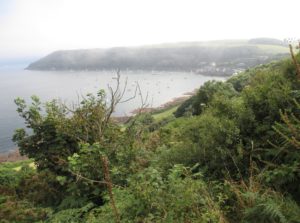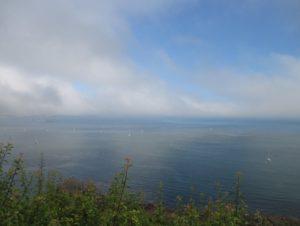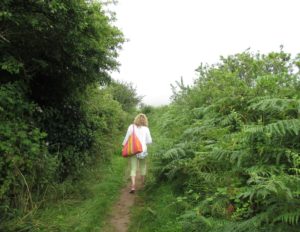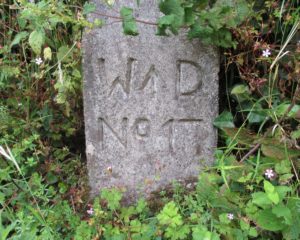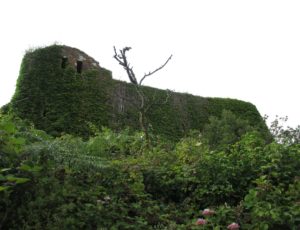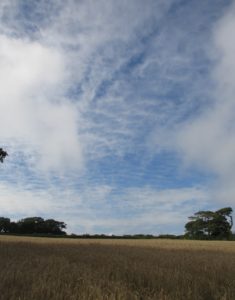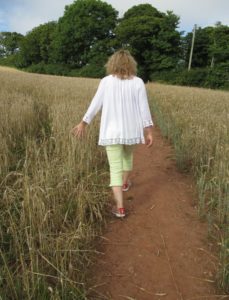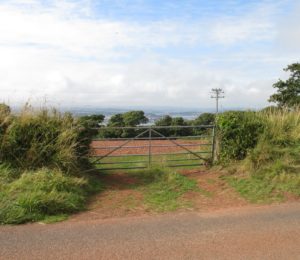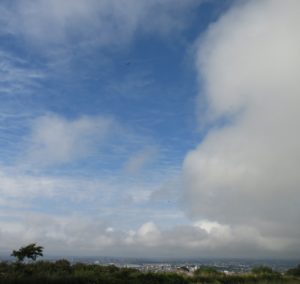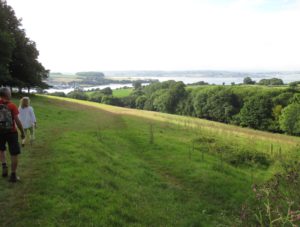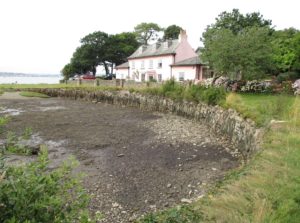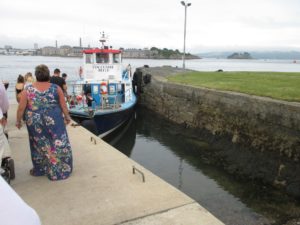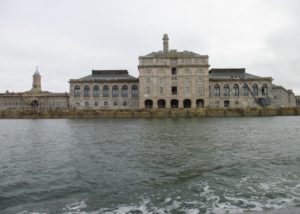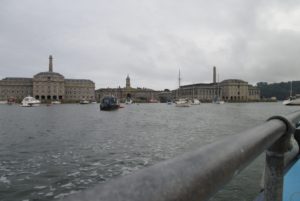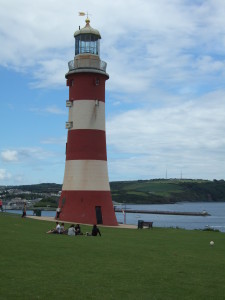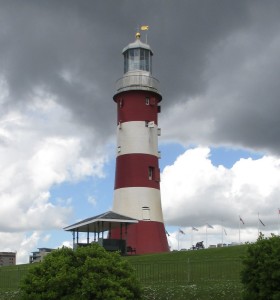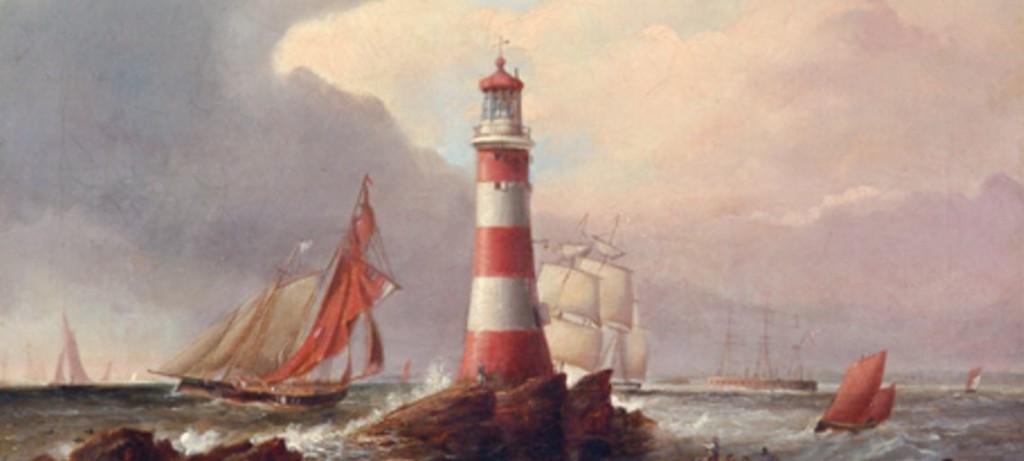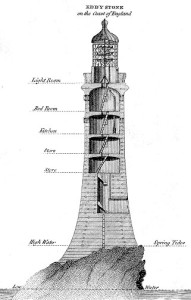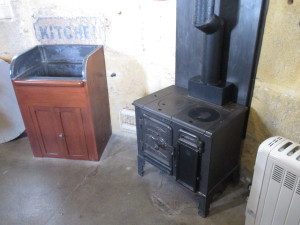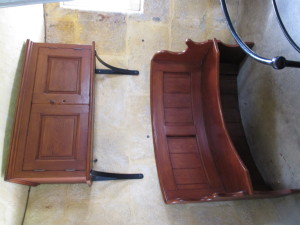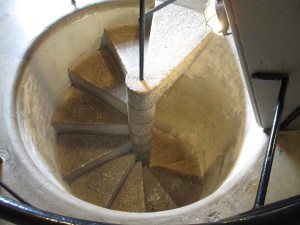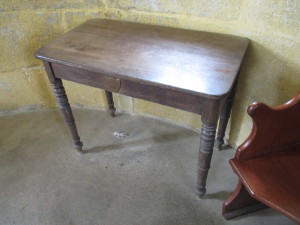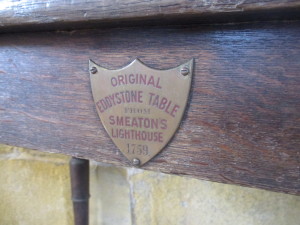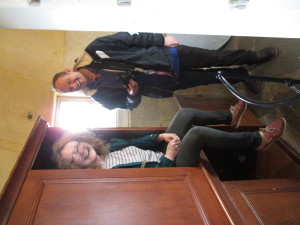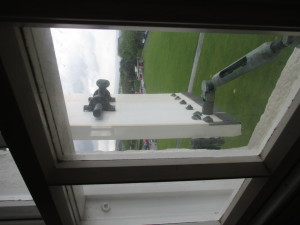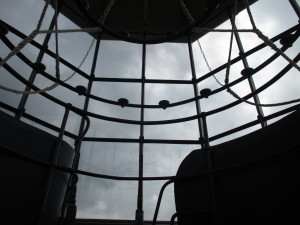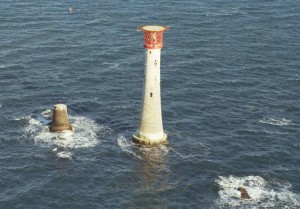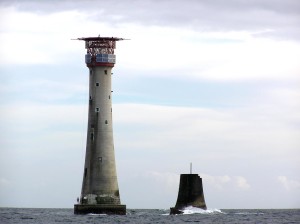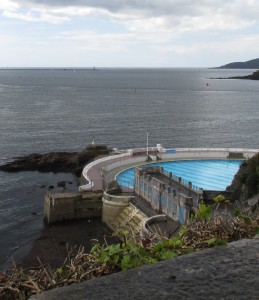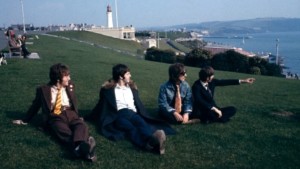Yesterday was glorious – a brilliant, sunshiney spring day when all’s right with the world. We headed north for our day out, first to Great Chalfield Manor near Melksham in Wiltshire, an amazing Tudor manor house owned by the National Trust and most recently seen in the BBC’s wonderful Wolf Hall, doubling as Sir Thomas Cromwell’s home, Austin Friars. I’ll write about this in more detail another time; we went on from Great Chalfield for a walk around the By Brook in Box, Wiltshire. It turned out to be quite a special walk, for quite a few reasons.
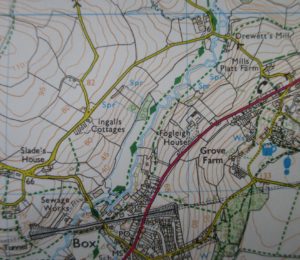
Detail from OS 1:25,000 Explorer Map 156 for Chippenham and Bradford-on-Avon. The squares are 1 km x 1 km.
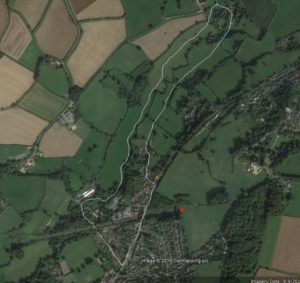
Google Earth view with our path marked out in a rather wobbly white line. We travelled in a clockwise direction. The red dot marks the western portal of the Box Tunnel.
We parked up near the railway bridge and walked past some old mill buildings with a funky lead-clad modern extension which only today (Monday) I have found out were Peter Gabriel‘s Real World Studios, where such luminaries as Gabriel himself, Beyoncé, Björk, Pixies, Kanye West, Robert Plant, Amy Winehouse, Brian Eno, Jay-Z, Coldplay, Deep Purple and New Order have recorded. Had I realised at the time I would have taken some photos! Anyhow, no celebs were spotted, just a lad with a skateboard and other locals. We followed the footpath heading north-east along the western side of the brook, which in places was quite wide and deep: deep enough for skateboard lad and his friend to be swimming in it. Brave for this time of year, despite the sunshine.
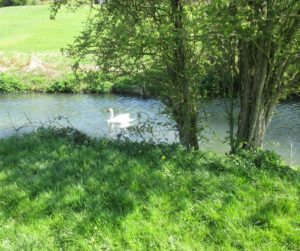
Swan on the By Brook, Box, Wiltshire. The brook had narrowed by this point: further south it was wider and deep enough for swimming.
Unexpected moment number one came when Chap saw what he thought was a cormorant (Phalacrocorax carbo) perched in the windy tops of a tree over the brook. Not the sort of bird you expect to encounter on a country walk through pasture land. But sure enough, a cormorant it was.
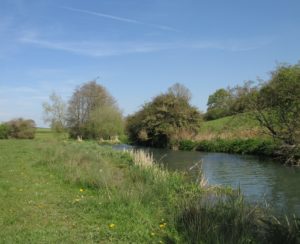
That dark speck at the top of the trees is a cormorant. Chap has decidedly better eyesight (and bird recognition skills) than me.
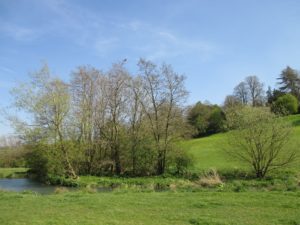
Closing in on the cormorant.
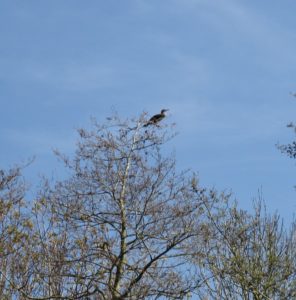
He or she didn’t seem at all bothered as we passed by.
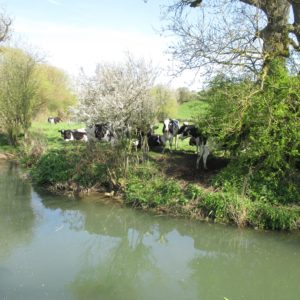
Holstein cows.
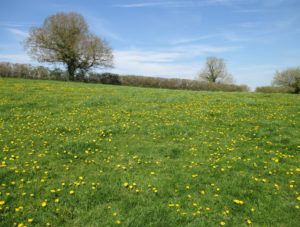
Dandelions ahoy.
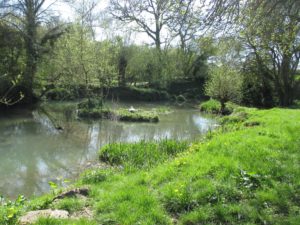
A swan nesting on an island.
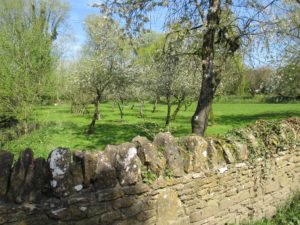
Beautiful orchard in blossom.
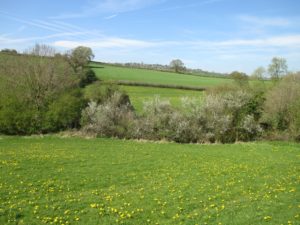
In the distance is the village of Colerne with its prominent church tower.
Unexpected moment number two: a fairy circle of St George’s mushrooms (Calocybe gambosa). These are traditionally found round about St George’s Day (23 April), hence the name: mine are a bit early, I guess brought on by the wonderful weather. I picked some (Chap’s sandwich bag made a handy receptacle). They are good to eat, fried with butter and garlic.
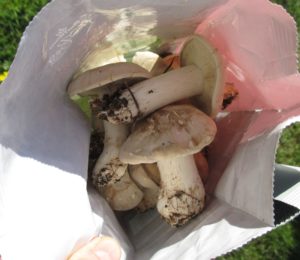
St George’s mushrooms. Yummy fried with butter and garlic.
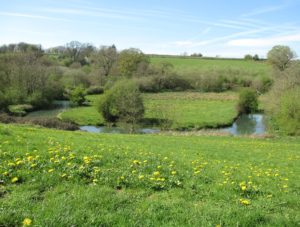
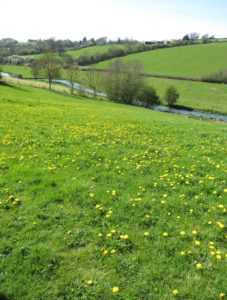 Unexpected moment number three: Box Tunnel. I knew of Isambard Kindom Brunel‘s magnificent engineering endeavour, but had never seen it. Our footpath and then a small road led us out on to the main road, the A4, and there it was! Built between 1838 and 1841 for the Great Western Railway (GWR), it was a considerable engineering feat, at 2.95 km (1.83 miles) long, and dug through difficult and challenging strata. It’s sobering to learn that around 100 labourers died during the tunnel’s construction.
Unexpected moment number three: Box Tunnel. I knew of Isambard Kindom Brunel‘s magnificent engineering endeavour, but had never seen it. Our footpath and then a small road led us out on to the main road, the A4, and there it was! Built between 1838 and 1841 for the Great Western Railway (GWR), it was a considerable engineering feat, at 2.95 km (1.83 miles) long, and dug through difficult and challenging strata. It’s sobering to learn that around 100 labourers died during the tunnel’s construction.
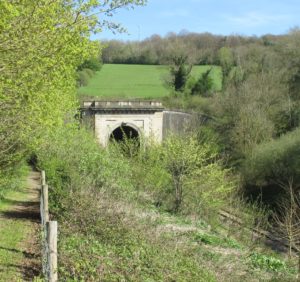
The west portal of Box Tunnel.
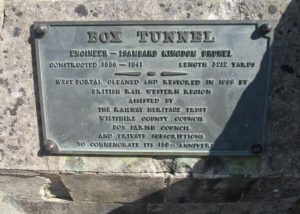
Commemorative plaque for the restoration of the portal in 1986. The tunnel was constructed between 1838 and 1841; surveying (including the sinking of eight shafts to ascertain the geology) took place in 1836 and 1837.
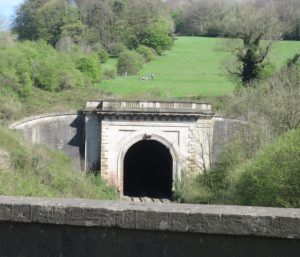
The west portal of Box Tunnel: I don’t think many civil engineering projects nowadays would decorate their structures with carved stone balustrading.
Unexpected moment number four: as we walked back in to Box we passed a B&B with a blue plaque on the wall: the author of the Thomas the Tank Engine books, Reverend W V Awdry, had lived here as a child.
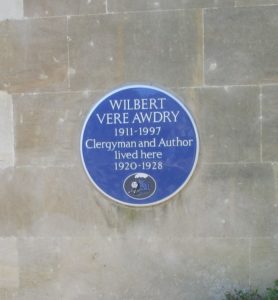
Blue plaque at Lorne House B&B for Reverend W V Awdry, of Thomas the Tank Engine books fame.
Here’s what Wikipedia has to say about his time in the house, then known as Lorne Villa, and its influence on his future career as an author:
“[Awdry’s house] was only 200 yards (180 m) from the western end of Box Tunnel. There the Great Western Railway main line climbs at a gradient of 1 in 100 for two miles. A banking engine was kept there to assist freight trains up the hill. These trains usually ran at night and the young Awdry could hear them from his bed, listening to the coded whistle signals between the train engine and the banker as well as the sharp bark from the locomotive exhausts as they fought their way up the incline. Awdry related: “There was no doubt in my mind that steam engines all had definite personalities. I would hear them snorting up the grade and little imagination was needed to hear in the puffings and pantings of the two engines the conversation they were having with one another.“ Here was the inspiration for the story of Edward helping Gordon‘s train up the hill, a story that Awdry first told his son Christopher some 25 years later, and which appeared in the first of the Railway Series books.”
Now I have a small but particular connection to Rev. Awdry. He was born in 1911 in Ampfield Vicarage near Romsey in Hampshire, and lived there until 1917. My mother lived in Ampfield Vicarage from September 1942 until some time in 1946: the vicar and his wife were the legal guardians of my mother and her brother while my grandparents were living in Borneo (and later held in a Japanese internment camp there). So this little blue plaque brought up all sorts of memories.
And then, across the road from Lorne Villa, came unexpected moment number five: a ruddy great steam thingamybob parked in someone’s front garden:
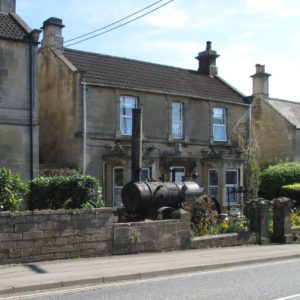
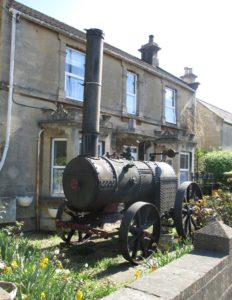
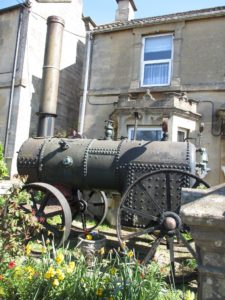
A bit of poking around on the web, and a gentleman on a forum tells that it is
“the boiler for a portable steam engine of the type used for powering belt-driven machinery, typically threshing machines used in separating grain from straw and chaff. The wheels indicate that it was pulled from place to place by horses, and not self-propelled. The engine is gone, too; all that remains is the boiler that generated steam to drive the engine.”
So something like this in its heydey:
So a wonderful day full of wonderful moments.

